Are you doing a kitchen or bathroom remodel and would want something that will give you a return on investment? Thermofoil cabinets will not disappoint you.
A study on kitchen improvement shows that 94% of homeowners doing kitchen renovation include some cabinet upgrade as part of their project. Of this percentage, 68%, which is the majority, replace all their cabinets.
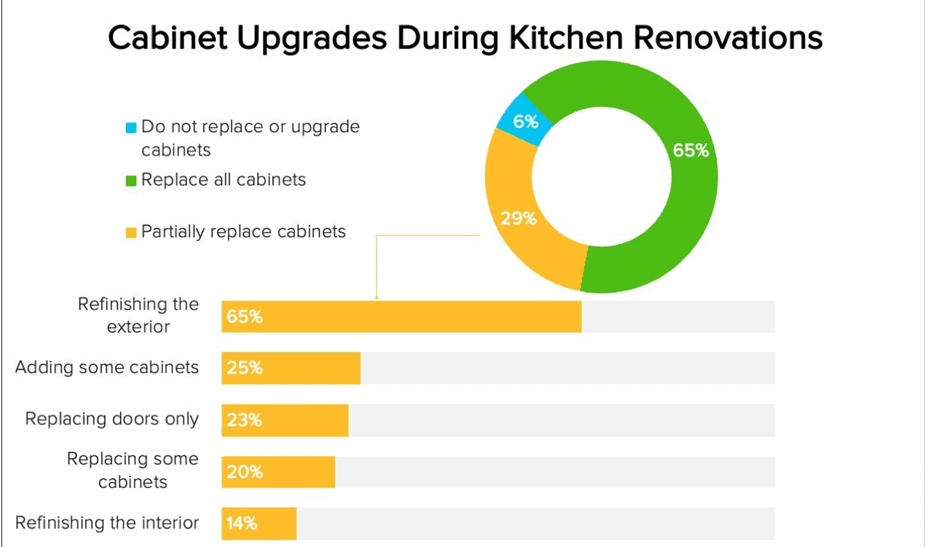
Source: houzz.com
But why thermofoil cabinets?
Thermofoil is super-durable and can withstand general wear and tear from daily use. The vinyl coating holds up strongly against frequent water spills.
Thermofoil material is stain and scratch-resistant, and it can last a decade or more with proper care.
So, what makes thermofoil cabinets last this long?
In this article, we’ll look at some key factors that contribute to thermofoil durability and how you can maximize them.
We will also show you other factors that compromise the durability of thermofoil cabinets so you can avoid them.
JUMP TO : Lifespan of Thermofoil Cabinet | Factors that Make Thermofoil Durable | Factors that Affect the Thermofoil Durability | How to Protect Thermofoil Cabinet | About Thermofoil Cabinets |
Key Takeaways
- Thermofoil cabinets can last up to 15 years or more in pristine condition
- However, this is highly dependent on the care you take of them as a homeowner
- They can withstand daily use, wear, damage and pressure
- Unfortunately, they are not heat-resistant. Heat causes the thermofoil to pull away from the core
How Long Do Thermofoil Cabinets Last
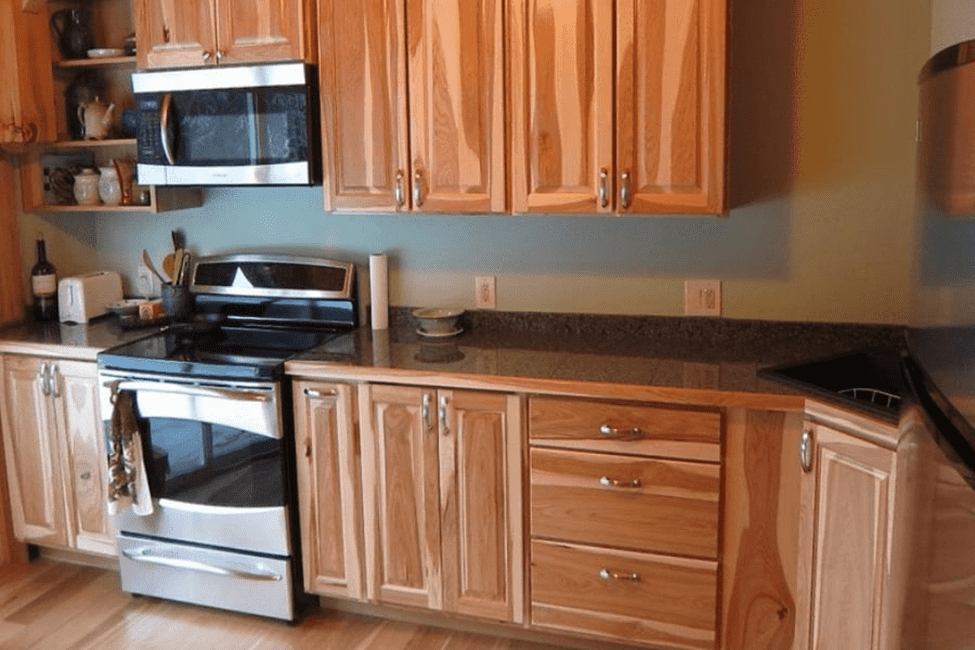
Source: bestonlinecabintes.com
Thermofoil cabinets can last up to 15 years or more if properly maintained. They are made to resist scratching, warping, and damage resulting from everyday use unlike natural wood cabinets
These cabinets are perfect for kitchen remodeling. If you are looking for something trendy and that you don’t mind upgrading after a few years, thermofoil is an ideal choice.
Related Read: Pros and Cons of Thermofoil Cabinets Explained in Detail
Factors That Make Thermofoil Durable
So, what factors contribute to the durability of thermofoil?
Moisture Resistance
Thermofoil cabinets can withstand usage in moist environments without losing their shape or color. As a result, they are perfect for kitchens and bathrooms where surfaces are prone to water spillage.
Since thermofoil surface coating is non-porous, it effectively blocks any water seepage. So, you don’t have to worry when water splashes on your kitchen and bathroom cabinets.
Important note: Although thermofoil is moisture resistant, it is not moistureproof. If there are gaps or flaws in the vinyl coating, water will still find its way into the MDF core.
The core is very vulnerable to moisture, and any seepage could lead to irreversible damage to your thermofoil cabinets.
Warping Resistance
If you are looking for warp-resistant cabinets, thermofoil is a good choice. They do not warp when subjected to high humidity levels, common in most kitchens.
The core of thermofoil cabinets is made of MDF. This material contracts and expands in one direction when exposed to rapid temperature changes. This way, it holds its shape better, compared to solid wood cabinets, in humid conditions.
Resistance to Delamination
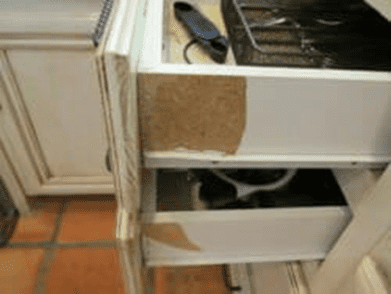
Source: buyersask.com
Delamination occurs when moisture penetrates wood cabinets that are not properly sealed.
For thermofoil often occurs when the thermofoil vinyl coating begins to peel, and the MDF core swells. When this happens, the only effective way to repair the damage is by replacing the drawer front or cabinet door entirely.
Fortunately, the materials and technology used in the manufacture of thermofoil doors have greatly improved over the years. Consequently, the delamination of the thermofoil cabinet door has lessened greatly unlike wooden cabinets.
Proper Care and Maintenance
The key to thermofoil longevity is proper care and maintenance. Thermofoil cabinets have seamless corners and joints that prevent bacteria, germs, grime, and dirt buildup. Their surface is very smooth, and you only need to wipe it clean with a damp cloth.
Stubborn grease and oil residues come off effortlessly with a solution of water and mild dish soap. Unlike wood a, you don’t need to add a top coat to the thermofoil to protect it. Just clean it, and you’re good to go.
Make it a norm to keep your thermofoil kitchen cabinets clean. Do not wait until they are extremely dirty for you to clean.
Do not use sharp objects or blunt force on the thermofoil doors as this could cause them to chip or break. Also, do not place the cabinets too close to a heat source, as this might cause the thermofoil to peel or detach from the MDF core.
Here is how to clean and care for your thermofoil cabinet doors.
Wipe your kitchen cabinets immediately after spills or splatters occur and weekly to remove dust. Use a soft, lint-free microfiber cloth or a clean, damp sponge.
Use a non-abrasive cleaner safe for use on vinyl or mild dish soap to remove stains, grease, and sticky substances.
Rub the surface gently in a circular motion to dislodge anything clinging to it.
Finally, wipe off the surface with a clean, dry microfiber cloth.
Factors that Affect the Longevity of Thermofoil Cabinets
Although thermofoil can last a decade, there are several factors that can compromise that durability. These include:
Prolonged Exposure to Humidity
Thermofoil can be very vulnerable when damaged, chipped, or cracked. Short-term or long-term exposure to humidity as a result of repeated splashes and steam from cooktops could cause irreversible damage to the thermofoil.
When the water reaches the fiberboard substrate, it causes it to bubble, swell and degrade faster.
Wipe off spills and moisture from thermofoil surfaces immediately to reduce the damage. It would also be good to repair or replace damaged surfaces soonest possible.
Exposure to Heat
Unfortunately, thermofoil cabinets are very vulnerable to heat damage. If installed too close to high-heat appliances like ovens and stovetops, the vinyl coat starts to pull away from the MDF core.
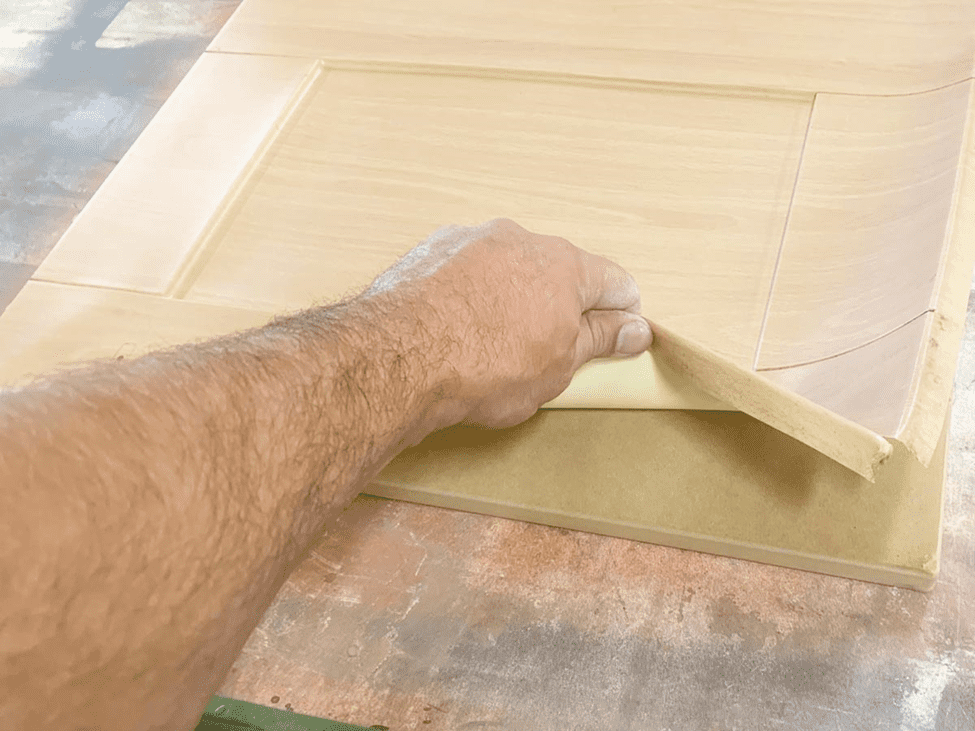
Source:cp-pad.co.uk
Avoid leaving your oven door open after or during cooking or using the oven’s self-cleaning feature if your kitchen has thermofoil cabinets. That high heat and steam can discolor the thermofoil vinyl coating causing it to peel or crack.
How Do You Protect Thermofoil Cabinets from Heat?
Since thermofoil cabinets are not heat-resistant, does that mean they are not suitable for kitchen use?
Of course not!
You can install a metal heat shield between the kitchen cabinets and the heat appliances and continue using your appliances as usual.
Important Note: Heat shields help to minimize damage but may not prevent it entirely.
Abrasive Cleaning Materials
Harsh and abrasive cleaners and detergents can dull or severely damage your thermofoil cabinets.
Also, avoid solvents and solvent-containing products like mineral oil, acetone, and ethyl alcohol. They can split or melt the thermofoil.
More About Thermofoil Cabinets
Do Thermofoil Cabinets Turn Yellow?
Yes, thermofoil cabinets, especially the white or off-white ones, turn dull yellow as they age. Besides age, letting grime or grime build up on your cabinets and exposing them to too much heat can speed up the discoloration.
Do Thermofoil Cabinets Peel?
Thermofoil cabinets peel primarily because of exposure to high temperatures or humidity. They could also peel as a result of age or damaged MDF.
When water penetrates into the MDF, it causes it to degrade and swell. As a result, the bond between the surface and the foil weakens, causing it to peel.
Poor manufacturing, for example, if the foil was not sealed correctly to the MDF (medium density fiberboard), could also cause peeling issues.
Can Thermofoil Cabinets be Resurfaced?
Yes, you can upgrade your thermofoil cabinet doors by refacing them to either solid hardwood cabinets or wood veneer. Doing so prolongs the lifespan of your cabinets and gives you an opportunity to explore different paints and designs.
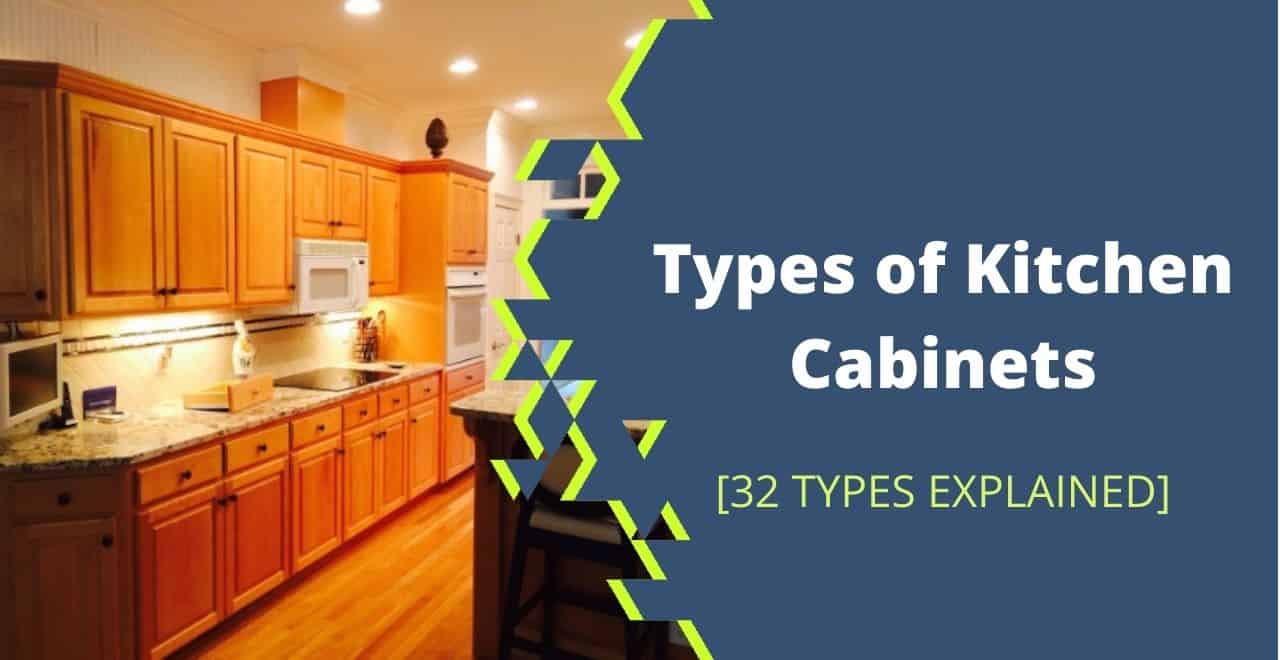
![Granite Vs. Marble Vs. Quartz Countertops [12 Differences+Pros & Cons] Granite Vs. Marble Vs. Quartz Countertops [12 Differences+Pros & Cons]](https://houseadorable.com/wp-content/uploads/2022/03/quartz-marble.jpg)

![16 Types of Kitchen Cabinet Finishes [Features + Pros & Cons] 16 Types of Kitchen Cabinet Finishes [Features + Pros & Cons]](https://houseadorable.com/wp-content/uploads/2022/10/cabinet-finish.jpg)
![Pros and Cons of Thermofoil Cabinets + Drawers [Explained] Pros and Cons of Thermofoil Cabinets + Drawers [Explained]](https://houseadorable.com/wp-content/uploads/2022/09/thermofoil.jpg)
![What Is Kitchen Cabinet Refacing? [Pros and Cons + Cost Analysis] What Is Kitchen Cabinet Refacing? [Pros and Cons + Cost Analysis]](https://houseadorable.com/wp-content/uploads/2022/04/Refacing.jpg)
![Painted Vs. Thermofoil Cabinets [Explained with Pros + Cons] Painted Vs. Thermofoil Cabinets [Explained with Pros + Cons]](https://houseadorable.com/wp-content/uploads/2022/09/Thermofoil-Kitchen-Cabinets-Are-Better-Than-Wood.jpg)
![How Long Does it Take to Install Kitchen Cabinets? [Steps Explained] How Long Does it Take to Install Kitchen Cabinets? [Steps Explained]](https://houseadorable.com/wp-content/uploads/2022/07/kitchen-cabinet-installation.jpg)